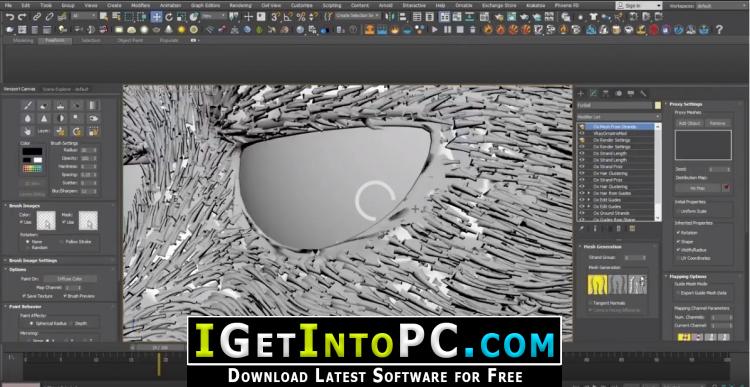


Other than the above, height/AO maps can also be very helpful for making diffuse maps. Note: for this to work ‘Per-Strand UV Coords’ must be ON. setting the hair tips to white, the roots to black. Its quite useful to bake down a falloff map, i.e.

Assign a Multi/Sub material to the hair set up 3-4 submaterials in Ox Mesh from Strands, turn on Random Scattering and set the number of Material IDs. to get some ‘mutant’ hairs to break up the look). Useful both on its own and in combination with a color map (i.e.

Ornatrix can randomly assign different material IDs to individual hairs - this allows for a generic ‘salt and pepper’ look. Make sure to turn ‘Per-Strand UV Coords’ OFF (Ox Mesh from Strands) This method is especially useful for fur like pictured here: brighter colors in the temple area, etc.etc.) can create great results. A simple, hand painted color map with nice value shifts over the scalp (e.g. Ornatrix will color individual hairs based on the color of the growth objects at the hair’s root. What usually works best is to bake down multiple maps and then comp everything together in Photoshop. DiffuseĬolor information from your hair system can easily be baked down to a flat texture, if you set the hair to mesh display mode (Ox Mesh from and Ox Render Settings). The general idea is to first create a full hair setup, which is then baked down to simple chunks of geometry - resulting in a number of texture maps. This section will use the workflow as an example which you can hopefully adapt to your own process regardless of which tool you are using. In some cases it can also be sensible to break a hairstyle up into multiple large patches. Depending on the hairstyle, it will either be a simple scalp plane, or a more complex shape that defines the volume of the hairstyle. This will be the base/foundation of most hairstyles. You are not limited to using this tool but when it comes to the general process of developing your own asset workflows may be similar.ĭCC Tool Setup Types of Hair/Hair Geometry Ornatrix was being used to generate both Highpoly source art as well as Lowpoly meshes that went into the game – specifically its powerful features in regards to lowpoly hair planes make it stand apart from other applications. The most recent implementation of hair shading strongly implies the use of alpha test in conjunction with soft alpha test enabled so the use of opacity is strongly discouraged since its visual result is prone to issues especially when sorting multiple polygons using opacity.įor Ryse, we relied heavily on the 3dsMax plugin Ornatrix to do our Hair and Fur work. Hair rendering is a relatively hard task to achieve in real-time with high quality results due to the very fine geometry and specific lighting behavior. The hair shader is a dedicated rendering technique for rendering hair and fur.


 0 kommentar(er)
0 kommentar(er)
